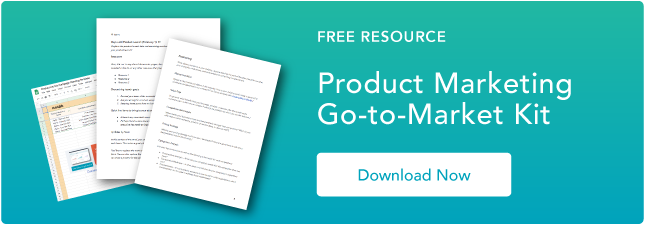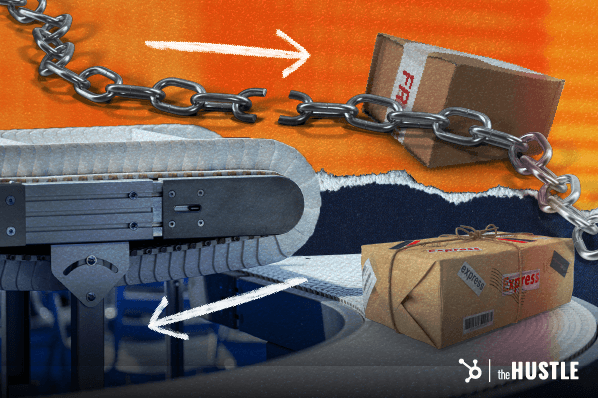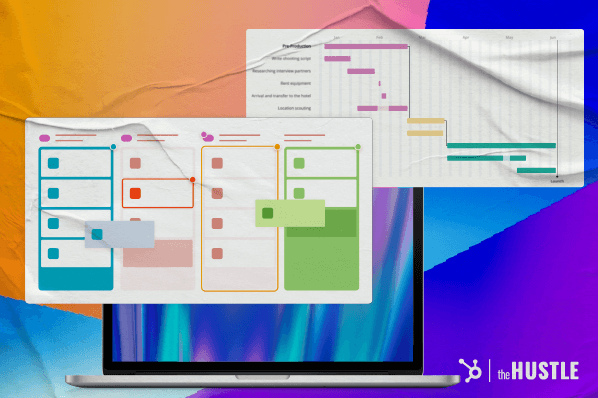Building amazing products that keep your clients and customers happy is difficult. Part of what makes it difficult is the need to keep track of all the features you want to add, figuring out their relative importance or priority, and knowing when to add them.
That’s why agile teams use a product backlog to make this job easier for the product owner. But even a product backlog becomes another source of confusion if it isn’t properly managed.
This guide will cover what a product backlog is and why having one is important. It’ll also go over some essential product backlog management tips to help your team focus on creating amazing products for your clients.
Table of contents:
- What is a product backlog?
- What is product backlog management?
- The importance of product backlog management
- Product backlog best practices
What is a product backlog?
In agile project management frameworks like Scrum, a product backlog is a prioritized list of product-related deliverables. It serves as the single source of work for everyone on the Scrum team.
The product backlog is managed by the product owner. They alone are responsible for adding items to it and sorting them based on priority — with the most important items appearing at the top and the least important ones at the bottom.

Free Product Go-to-Market Kit
Free templates to ensure that your whole team is aligned for your next product launch.
- Product Launch Template
- Product Roadmap Template
- Sales Plan Template
- And more!
Download Free
All fields are required.

How is a product backlog different from a sprint backlog?
A sprint backlog performs a similar function to the product backlog, but is different in key ways.
While a product backlog is a constantly evolving list that represents the entire goal of the product, a sprint backlog is a fixed list of deliverables taken from the product backlog during sprint planning for the purpose of completing them within a development cycle.
In other words, the product backlog informs the sprint backlog, which then informs the work a team completes during any given sprint.
What is a product backlog example?
Imagine you want to build a mobile app for an ecommerce store. The product backlog for this app would likely include items that cover common ecommerce features like:
- Product displays
- Product categories
- Adding or removing items from the shopping cart
- Checkout and payment options
- Product recommendations
- User reviews and ratings
Each of these items will have a user story that describes how the feature is supposed to work and some additional notes to help the team understand how to implement it. As new features are identified, those will be added to the product backlog according to their priority related to other features.
What is product backlog management?
Product backlog management is the process of making adjustments to the backlog to ensure that the product continues to deliver business value. This process involves adding or removing entries, determining the priority of backlog entries, and breaking down existing entries into smaller tasks.
As a product evolves, its backlog changes to accommodate new feature requests or high-priority items. These are moved back and forth between the product backlog and the sprint backlog. This is why it’s essential that the product owner directly manages the backlog. By doing so, they ensure that it correctly reflects the goals of the product and the requirements of its users.
The importance of product backlog management
Backlog management is an essential part of any product-building process.
According to Faik Onur Kutlubay, CEO of YouParcel, a global logistics company, “Every product owner must understand that the backlog is dynamic and evolving. It’s crucial to continuously refine and adapt it as customer needs and market conditions change.”
Here are a few reasons why product backlog management is an essential task for product owners and the product team as a whole:
Improve team efficiency
Backlog management streamlines the list of tasks that a team needs to focus on by prioritizing important features and moving less important ones to the back of the list. Since this is the main source of work for the product team, it means that there are no distractions that can interrupt their workflow.
Deliver value to customers
By prioritizing items on the list, the product owner ensures that the features with the potential to provide the most value to the customer are delivered with the product as soon as possible. This increases the likelihood that customers or clients will get the best results from a product in the early stages of the development process or during its release.
For example, if you were building a banking app, backlog management would ensure that product features like viewing account balances and transferring funds were prioritized, as these are core functions of the app.
Define product expectations
Another advantage of great product backlog management is that it helps set clear expectations for all stakeholders. Everyone involved will have a better understanding of the priorities as well as the timelines associated with certain features.
Enhance collaboration
While the product owner is responsible for maintaining the product backlog, it should be accessible to all stakeholders.
This transparency allows team members and other stakeholders to request additional information and provide feedback, which the product owner can review and use to adjust the backlog when needed.
Product backlog best practices
Now that you know why backlog management is important, it’s time to explore best practices you can use to properly manage your product backlog:
Keep the product goal in mind
The product goal serves as a focal point for the team, both in regard to the work that they do and the features they implement. As such, keeping this goal in mind will help product owners stay on task when it comes to managing the backlog.
Product owners can easily dismiss features that don’t align with the product goal, even if they seem like good additions to the product. The goal will also guide the product owner on which features to prioritize.
Have a single backlog
It can be tempting to create multiple backlogs to represent different aspects of a product, especially when it’s a really big one. After all, this should (theoretically) help keep things organized by allowing you to assign tasks to backlogs based on their core functions.
However, this isn’t necessarily the case. The whole point of a product backlog is to have a single source of work for your team to draw from. By having multiple backlogs, you increase the chances of team members becoming confused as they try to figure out which backlog to pay attention to and which features to prioritize over others.

Free Product Go-to-Market Kit
Free templates to ensure that your whole team is aligned for your next product launch.
- Product Launch Template
- Product Roadmap Template
- Sales Plan Template
- And more!
Download Free
All fields are required.

Update the product backlog regularly
One of the constant things about a product backlog is that it’s always changing. In fact, the backlog you created at the start of your project is usually very different from what it’ll look like six months into the product roadmap.
That’s because new product backlog items are always being added, either as improvements to existing features, bug fixes, or entirely new features.
So, never go into creating or managing a product backlog with the mindset that it’ll ever be finalized. Backlog refinement will ensure that it always represents what’s most important for the development of the project at the present moment.
Accept feedback
A product owner should be open to feedback from the development team and other stakeholders, and vice versa.
As Vladislav Podolyako, founder and CEO of Folderly, an email deliverability solution, puts it, “In the rapidly evolving world of product development, remaining receptive to change 24/7/365 is paramount. It puts additional pressure on teams but also improves their flexibility and the final product's competitiveness.”
Product owners should be flexible when it comes to adjusting the timelines, priorities, and descriptions of items on the backlog while also keeping the product goal in mind.
Reduce backlog bloat
Just imagine what it would be like trying to manage a product backlog with over a thousand items on it, all with detailed user stories, timelines, and priority statuses.
A backlog like this benefits no one. You could spend hours sifting through the hundreds of items with the highest priority level, struggling to pick the right ones for an upcoming sprint.
To prevent a situation like this from occurring, it’s important to re-prioritize work items and remove those that can’t be gotten to in a realistic timeline. This process of trimming the fat is called backlog grooming, and doing it regularly saves everyone time.
Keep your stakeholders involved
A key component of agile leadership is collaborating frequently with all stakeholders and keeping them informed. This way, you ensure that they are aware of the backlog’s status, and you can receive and incorporate their feedback. Examples might include holding regular backlog planning meetings and sending stakeholders updates on recent changes.
Project management tools like Asana and Trello simplify this process by creating a centralized backlog that everyone can access.
Prioritization is key
Setting the order of importance for list items in your backlog will affect which tasks get picked for a sprint. Several methodologies exist for product prioritization, like the Eisenhower Matrix and the product backlog prioritization quadrants.
Regardless of what method you use, the goal should be to move the features that are important for the product vision to the forefront of the backlog.
Include details when adding/updating items
Just because the product backlog is described as a list doesn’t mean it should be short on details. Each item is related to an improvement in the functionality of your product, so each one should contain the necessary details about how this improvement will work.
User stories are recognized as the best way to add details to backlog items, as they allow you to describe features and dependencies in a concise yet easy-to-understand way. However, not all items require user stories. A good example of one that wouldn’t necessarily need a user story is a backlog item for a bug fix.
Effective product backlog management is all about having regular grooming sessions to ensure that the most important items on your list align with the product strategy and have the buy-in of all the stakeholders.
By following the tips outlined above, you should be on the right path to managing an effective product backlog that keeps your team focused on making great products.


![→ Download Now: Free Product Marketing Kit [Free Templates]](https://no-cache.hubspot.com/cta/default/53/08b5e1f4-5d26-405b-b986-29c99bd0cb14.png)









